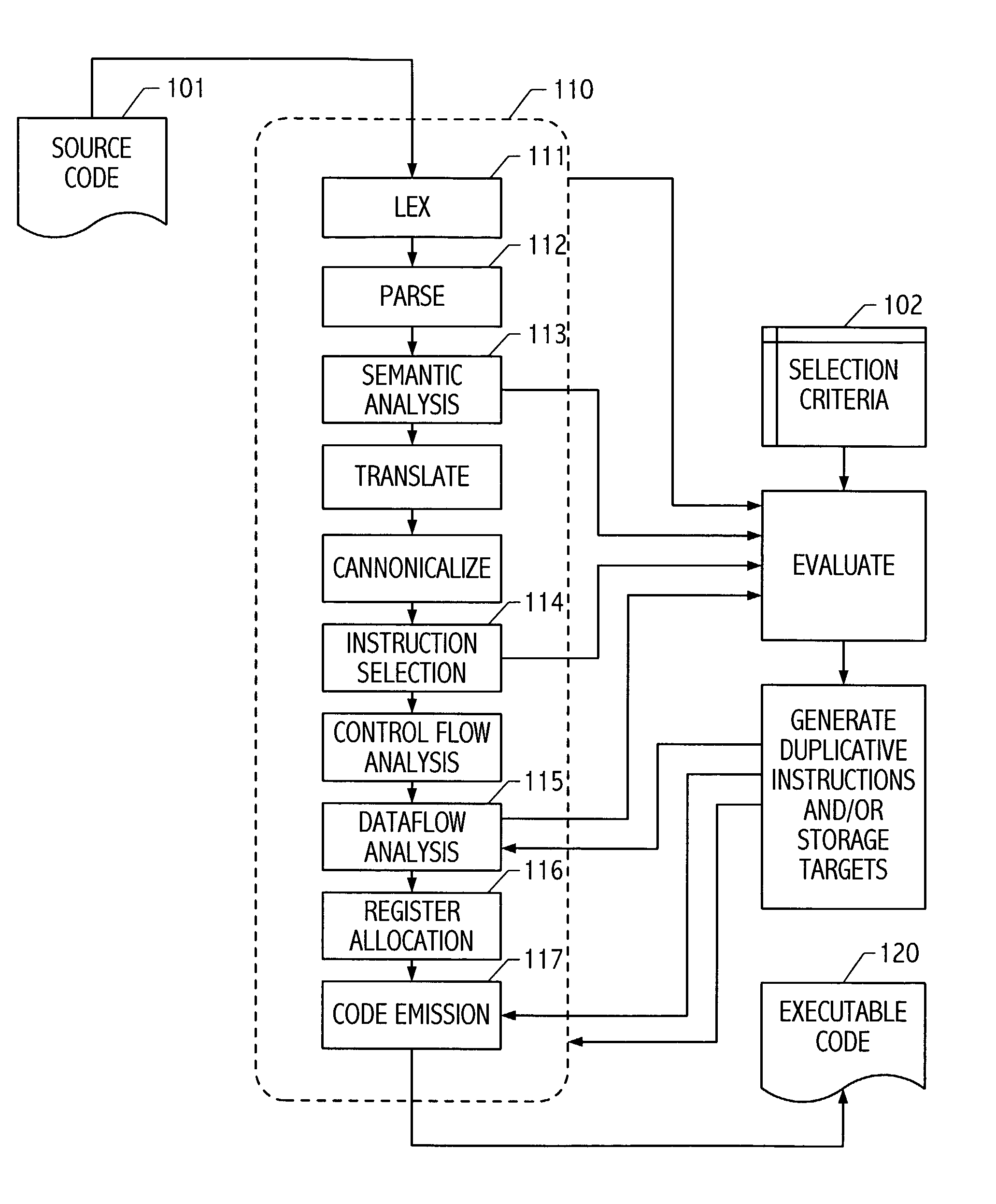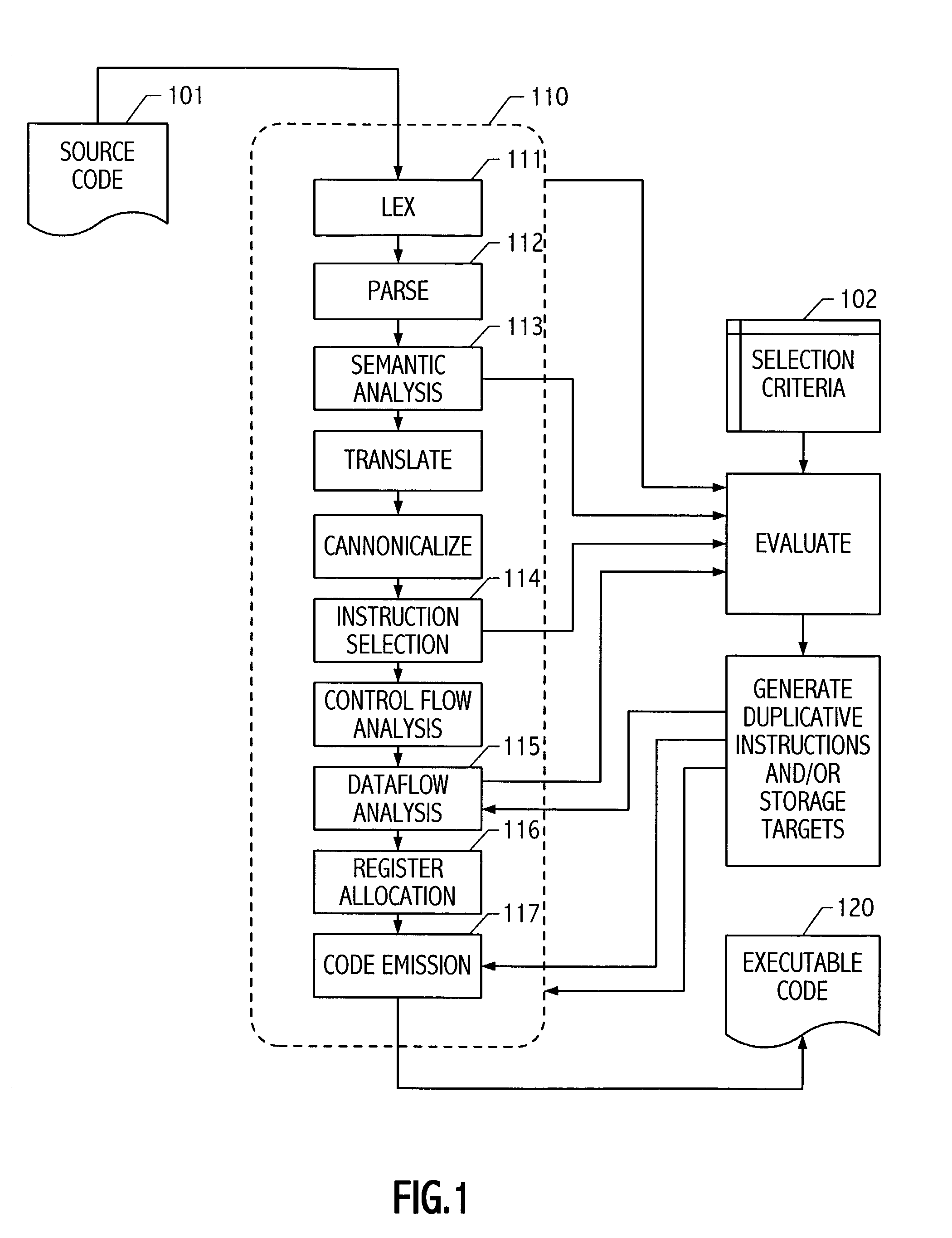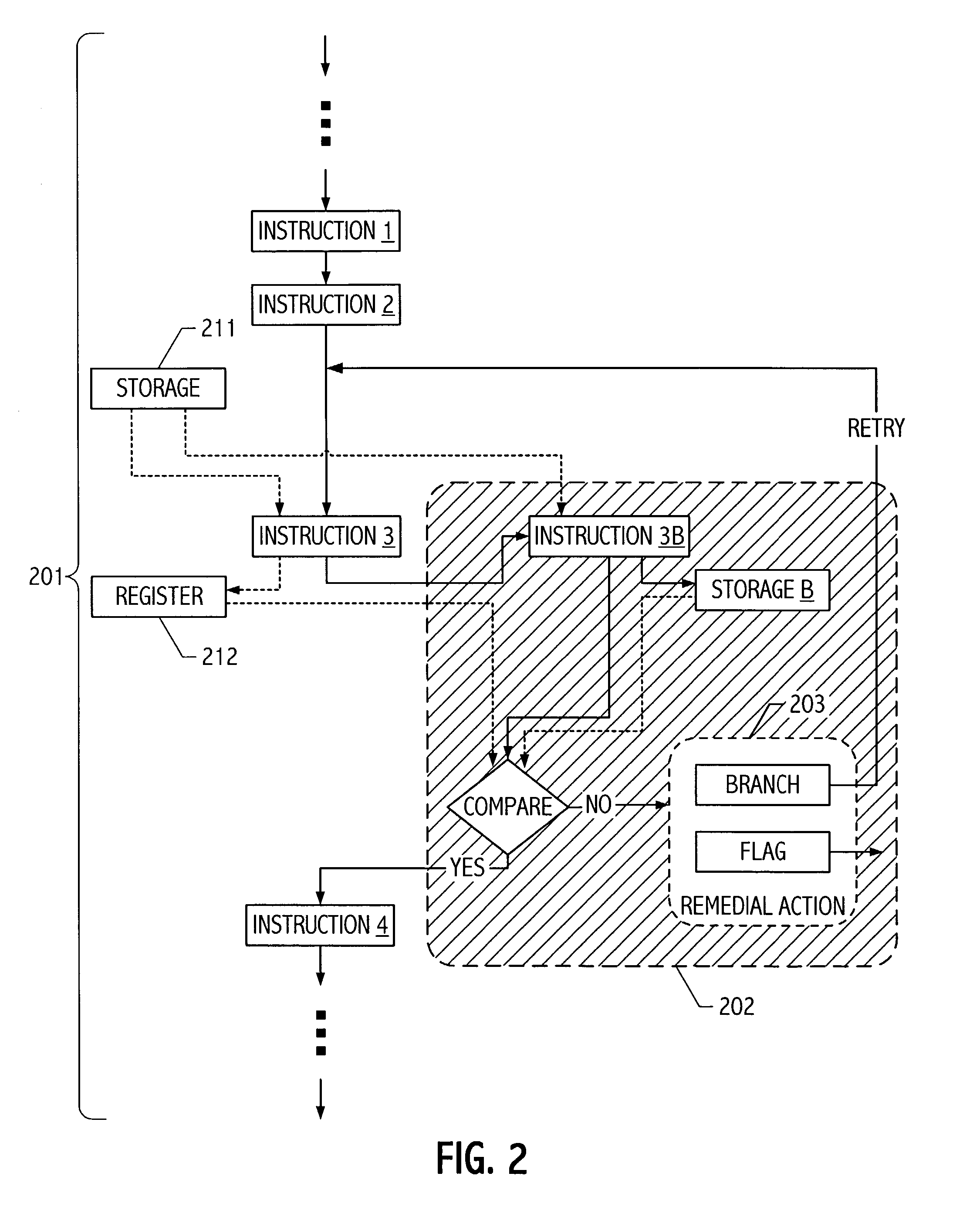Detecting and mitigating soft errors using duplicative instructions
a technology of duplicative instructions and detection and correction, applied in error detection/correction, instruments, computing, etc., to achieve the effect of facilitating detection and/or correction of soft errors
- Summary
- Abstract
- Description
- Claims
- Application Information
AI Technical Summary
Benefits of technology
Problems solved by technology
Method used
Image
Examples
Embodiment Construction
)
[0014]A variety of systems are envisioned that employ techniques of the present invention to detect and / or mitigate soft errors using duplicative instructions. For example, compilers, just in time (JIT) compilers, interpreters, binary-to-binary translation programs and other software systems may be employed to generate executable code in (or transform executable code into) a form in which soft-errors that would otherwise go undetected and potentially cause data corruption can, instead, be detected and / or mitigated through execution of extra instructions inserted into an execution path of the executable code. In this way, the compiler, just in time (JIT) compiler, interpreter or binary-to-binary translation program, rather than (or in addition to) fault tolerant hardware or system techniques provides error detection and / or mitigation.
[0015]In general, such techniques may be employed on a highly selective basis (e.g., targeting a specific known or suspected vulnerability) or more com...
PUM
 Login to View More
Login to View More Abstract
Description
Claims
Application Information
 Login to View More
Login to View More - R&D
- Intellectual Property
- Life Sciences
- Materials
- Tech Scout
- Unparalleled Data Quality
- Higher Quality Content
- 60% Fewer Hallucinations
Browse by: Latest US Patents, China's latest patents, Technical Efficacy Thesaurus, Application Domain, Technology Topic, Popular Technical Reports.
© 2025 PatSnap. All rights reserved.Legal|Privacy policy|Modern Slavery Act Transparency Statement|Sitemap|About US| Contact US: help@patsnap.com



